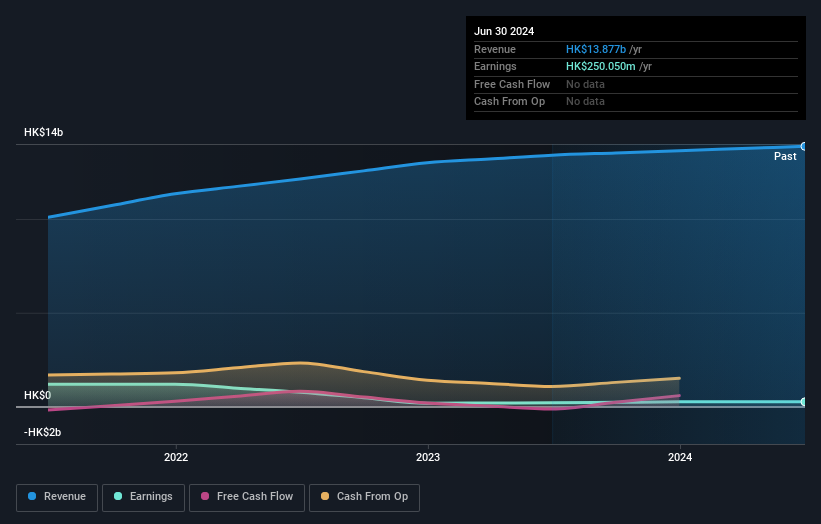
Key Insights
- Significant control over Zhongyu Energy Holdings by public companies implies that the general public has more power to influence management and governance-related decisions
- The top 2 shareholders own 66% of the company
- Insiders own 37% of Zhongyu Energy Holdings
To get a sense of who is truly in control of Zhongyu Energy Holdings Limited (HKG:3633), it is important to understand the ownership structure of the business. With 37% stake, public companies possess the maximum shares in the company. In other words, the group stands to gain the most (or lose the most) from their investment into the company.
Following a 11% increase in the stock price last week, public companies profited the most, but insiders who own 37% stock also stood to gain from the increase.
Let's delve deeper into each type of owner of Zhongyu Energy Holdings, beginning with the chart below.
View our latest analysis for Zhongyu Energy Holdings

What Does The Institutional Ownership Tell Us About Zhongyu Energy Holdings?
Institutions typically measure themselves against a benchmark when reporting to their own investors, so they often become more enthusiastic about a stock once it's included in a major index. We would expect most companies to have some institutions on the register, especially if they are growing.
Institutions have a very small stake in Zhongyu Energy Holdings. That indicates that the company is on the radar of some funds, but it isn't particularly popular with professional investors at the moment. If the company is growing earnings, that may indicate that it is just beginning to catch the attention of these deep-pocketed investors. We sometimes see a rising share price when a few big institutions want to buy a certain stock at the same time. The history of earnings and revenue, which you can see below, could be helpful in considering if more institutional investors will want the stock. Of course, there are plenty of other factors to consider, too.

We note that hedge funds don't have a meaningful investment in Zhongyu Energy Holdings. The company's largest shareholder is China Gas Holdings Limited, with ownership of 37%. With 29% and 6.8% of the shares outstanding respectively, Wenliang Wang and Chi Shing Yiu are the second and third largest shareholders. Interestingly, the bottom two of the top three shareholders also hold the title of Top Key Executive and Vice Chairman, respectively, suggesting that these insiders have a personal stake in the company.
To make our study more interesting, we found that the top 2 shareholders have a majority ownership in the company, meaning that they are powerful enough to influence the decisions of the company.
While studying institutional ownership for a company can add value to your research, it is also a good practice to research analyst recommendations to get a deeper understand of a stock's expected performance. As far as we can tell there isn't analyst coverage of the company, so it is probably flying under the radar.
Insider Ownership Of Zhongyu Energy Holdings
The definition of company insiders can be subjective and does vary between jurisdictions. Our data reflects individual insiders, capturing board members at the very least. The company management answer to the board and the latter should represent the interests of shareholders. Notably, sometimes top-level managers are on the board themselves.
I generally consider insider ownership to be a good thing. However, on some occasions it makes it more difficult for other shareholders to hold the board accountable for decisions.
It seems insiders own a significant proportion of Zhongyu Energy Holdings Limited. It has a market capitalization of just HK$14b, and insiders have HK$5.1b worth of shares in their own names. That's quite significant. Most would be pleased to see the board is investing alongside them. You may wish to access this free chart showing recent trading by insiders.
General Public Ownership
The general public, who are usually individual investors, hold a 25% stake in Zhongyu Energy Holdings. While this size of ownership may not be enough to sway a policy decision in their favour, they can still make a collective impact on company policies.
Public Company Ownership
It appears to us that public companies own 37% of Zhongyu Energy Holdings. It's hard to say for sure but this suggests they have entwined business interests. This might be a strategic stake, so it's worth watching this space for changes in ownership.
Next Steps:
It's always worth thinking about the different groups who own shares in a company. But to understand Zhongyu Energy Holdings better, we need to consider many other factors. Take risks for example - Zhongyu Energy Holdings has 2 warning signs we think you should be aware of.
Of course this may not be the best stock to buy. So take a peek at this free free list of interesting companies.
NB: Figures in this article are calculated using data from the last twelve months, which refer to the 12-month period ending on the last date of the month the financial statement is dated. This may not be consistent with full year annual report figures.
Have feedback on this article? Concerned about the content? Get in touch with us directly. Alternatively, email editorial-team (at) simplywallst.com.
This article by Simply Wall St is general in nature. We provide commentary based on historical data and analyst forecasts only using an unbiased methodology and our articles are not intended to be financial advice. It does not constitute a recommendation to buy or sell any stock, and does not take account of your objectives, or your financial situation. We aim to bring you long-term focused analysis driven by fundamental data. Note that our analysis may not factor in the latest price-sensitive company announcements or qualitative material. Simply Wall St has no position in any stocks mentioned.